Hanbok and Hanfu: How Are They Related?

Years ago, Liu Yifei stunned audiences during the overseas promotion of A Chinese Ghost Story by wearing a pink and light yellow hanbok. Her ethereal beauty in the outfit only cemented her “Fairy Sister” reputation.
However, the look sparked controversy at the time—many Chinese netizens mistakenly identified it as hanfu due to the Chinese characters on the attire. In recent years, Korean dramas have featured costumes strikingly similar to hanfu, further confusing the public.
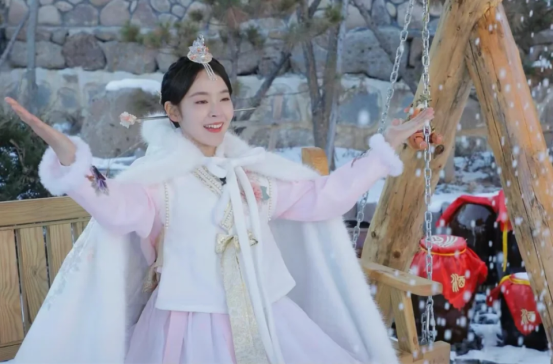
This isn’t the first time such confusion has arisen. When actress Zhang Jining wore Korean-Joseon clothing to promote Yanbian (a Chinese Korean autonomous prefecture), Korean netizens controversially accused her of “stealing hanbok.” These incidents highlight significant misunderstandings about the differences between hanfu and hanbok. In fact, modern hanbok evolved from ancient Korean-Joseon attire, which itself was influenced by Chinese fashion. Let’s revisit the key distinctions between these two iconic dress traditions.
The Origins of Korean-Joseon Attire
During the Ming Dynasty, the Korean Peninsula (as a vassal state) received imperial clothing gifts from Chinese emperors, allowing nobles to wear attire similar to the ruling dynasty. The Samguk Sagi notes:
“In the third year of King Jindeok’s reign, Koreans first adopted Chinese clothing and headwear.”
As a vassal, however, their upper garments could not exceed the length of those worn in China. Over time, local cultural influences led to modifications, creating distinct stylistic differences—some of which are still preserved in the traditional clothing of the Korean ethnic minority in China.
1. Women’s Clothing
Let’s start with the most commonly confused elements: women’s and men’s styles. Modern South Korea’s traditional women’s formal wear still features the “jacket-over-skirt” design, similar to the aoqun (robe and skirt) style of Ming Dynasty hanfu. However, key details set them apart:
- Fastening Position
Hanfu aoqun: The crossed-collar fastenings typically sit at the side of the body.
Hanbok: Fastenings are secured at the chest, and some styles have shorter upper garments.
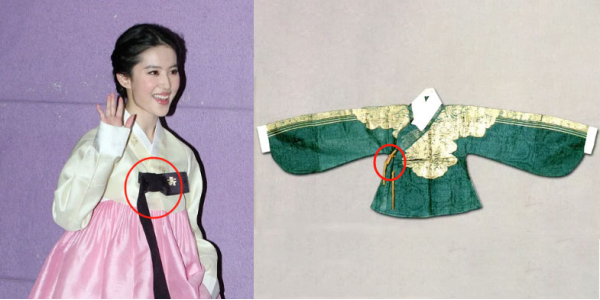
- Skirt Structure
Hanfu features two main types of lower garments: pleated skirts and mamian skirt, both tied at the waist to hang in natural curves. In contrast, Korean pleated or tube skirts are worn with the waistband pulled up to chest level, resembling the high-waisted style of Tang Dynasty shan skirt. They often include A-line petticoats for a puffed effect.
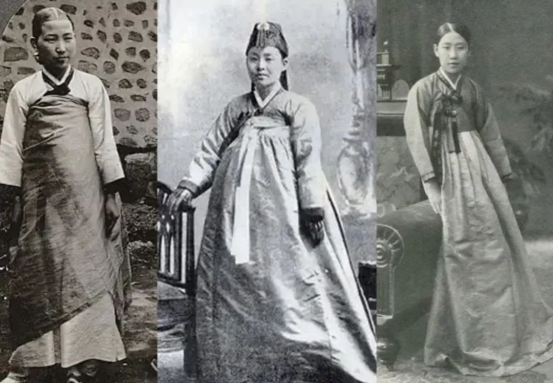
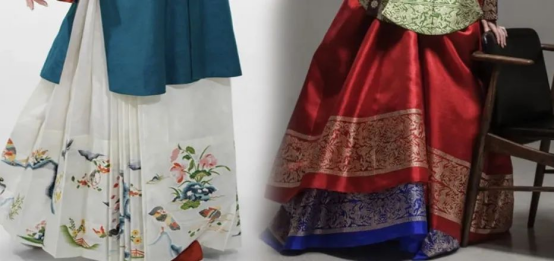
- Sleeve Styles
Hanfu offers diverse sleeve designs, such as pipa sleeves (wide, curved like a lute), narrow sleeves, and dramatic wide sleeves. Hanbok, however, predominantly features straight or narrow sleeves.
- Craftsmanship
Hanfu is renowned for intricate techniques like zhuanghua (pattern-dyed silk) and zhijin (gold-thread weaving). Hanbok, historically limited by resources, often uses gold-foil stamping instead, giving it a less luxurious appearance.
2. Men’s Clothing
Like women’s wear, men’s hanfu fastens at the side, while hanbok fastens at the chest. A key identifier lies in the daopao:
Traditional hanfu daopao has generously cut sleeves and hemlines, concealing the wearer’s hands and revealing only the tips of their shoes.
The hemlines and sleeves of hanbok daopao are not as generously sized as those of hanfu.
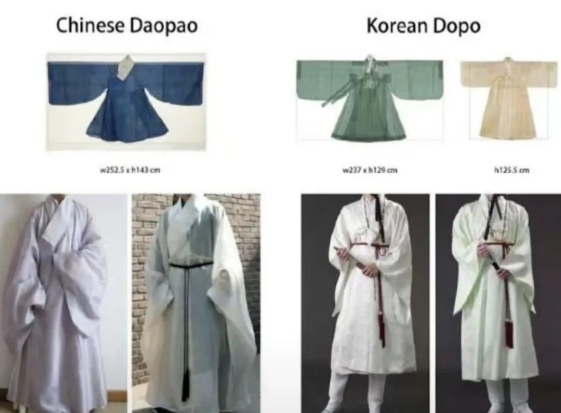
Korean formal ceremonial attire most closely resembles the early imperial gifted clothing, with round collars dominating outer garments for significant rituals. However, these have been modified over time—evolving from the Ming Dynasty’s straight round collars to elongated round collars and large front-opening styles with symmetrical flaps.
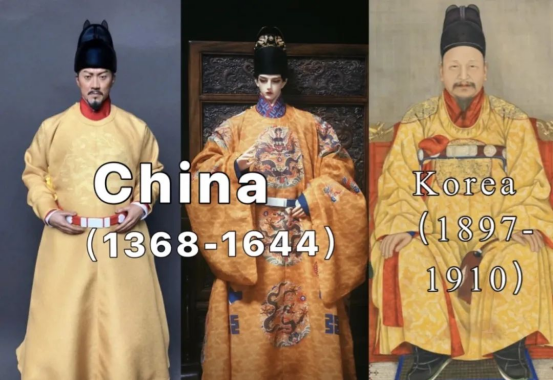
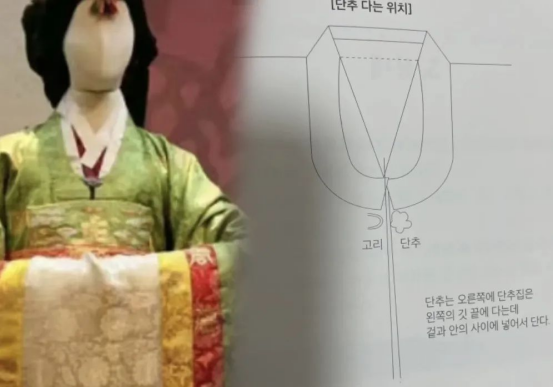
Summary
During the Ming Dynasty, Chinese fashion profoundly influenced Korea and Vietnam. Initially, nobles in these vassal states wore clothing identical to Ming officials, thanks to imperial clothing gifts. However, after the Ming stopped bestowing such garments, limited resources, craftsmanship, and technological constraints (e.g., smaller populations and lower productivity compared to China) made it impossible to replicate hanfu’s original intricacy.
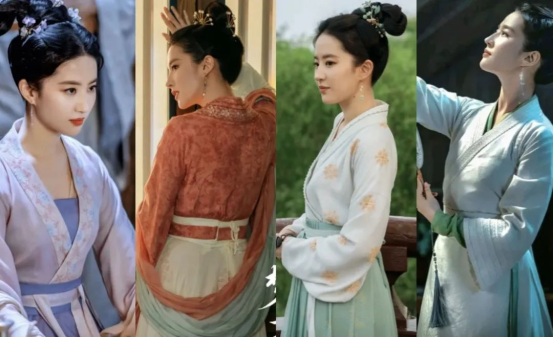
Every ethnic costume has its unique beauty. With growing access to clothing archives today, people can visually distinguish these traditions through comparison. We hope more will explore China’s rich clothing culture—just as Liu Yifei’s on-screen Tang dynasty clothing (衫裙, shan skirt, the picture ablove) earned widespread praise, inspiring netizens to call for her to wear more hanfu!
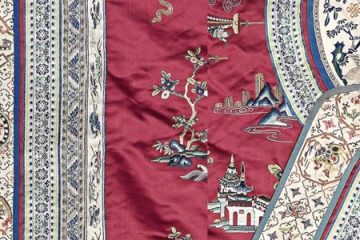
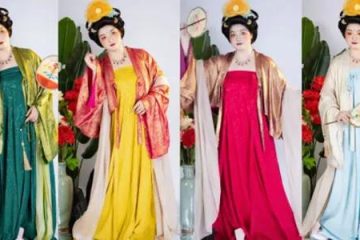
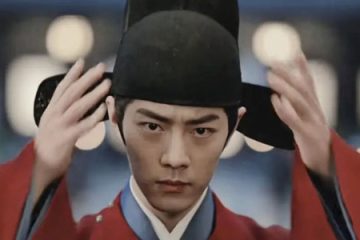
0 Comments